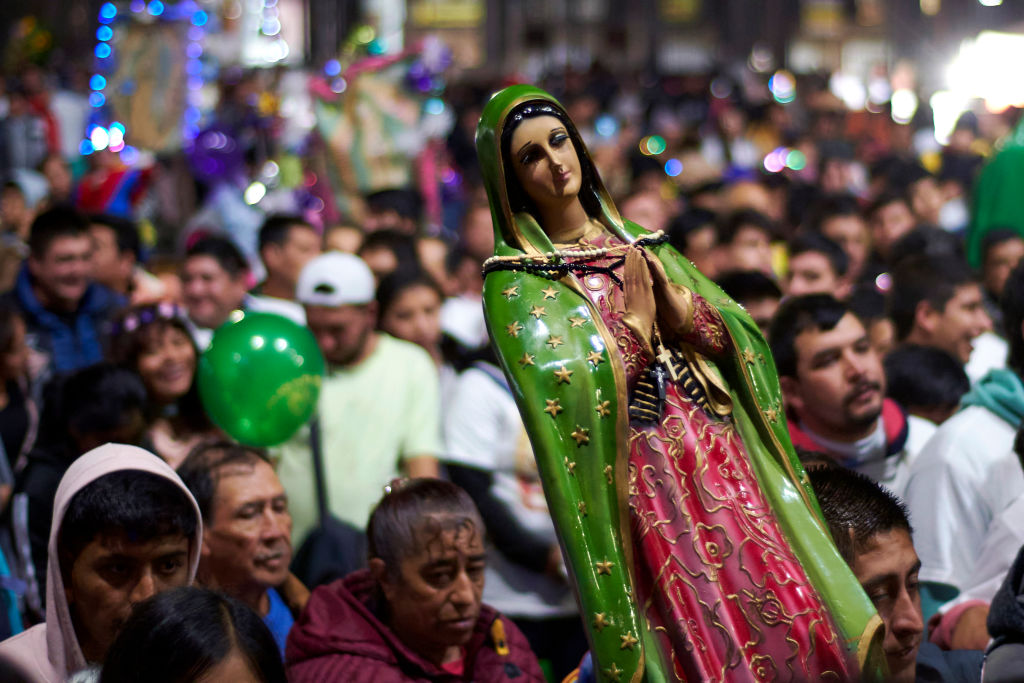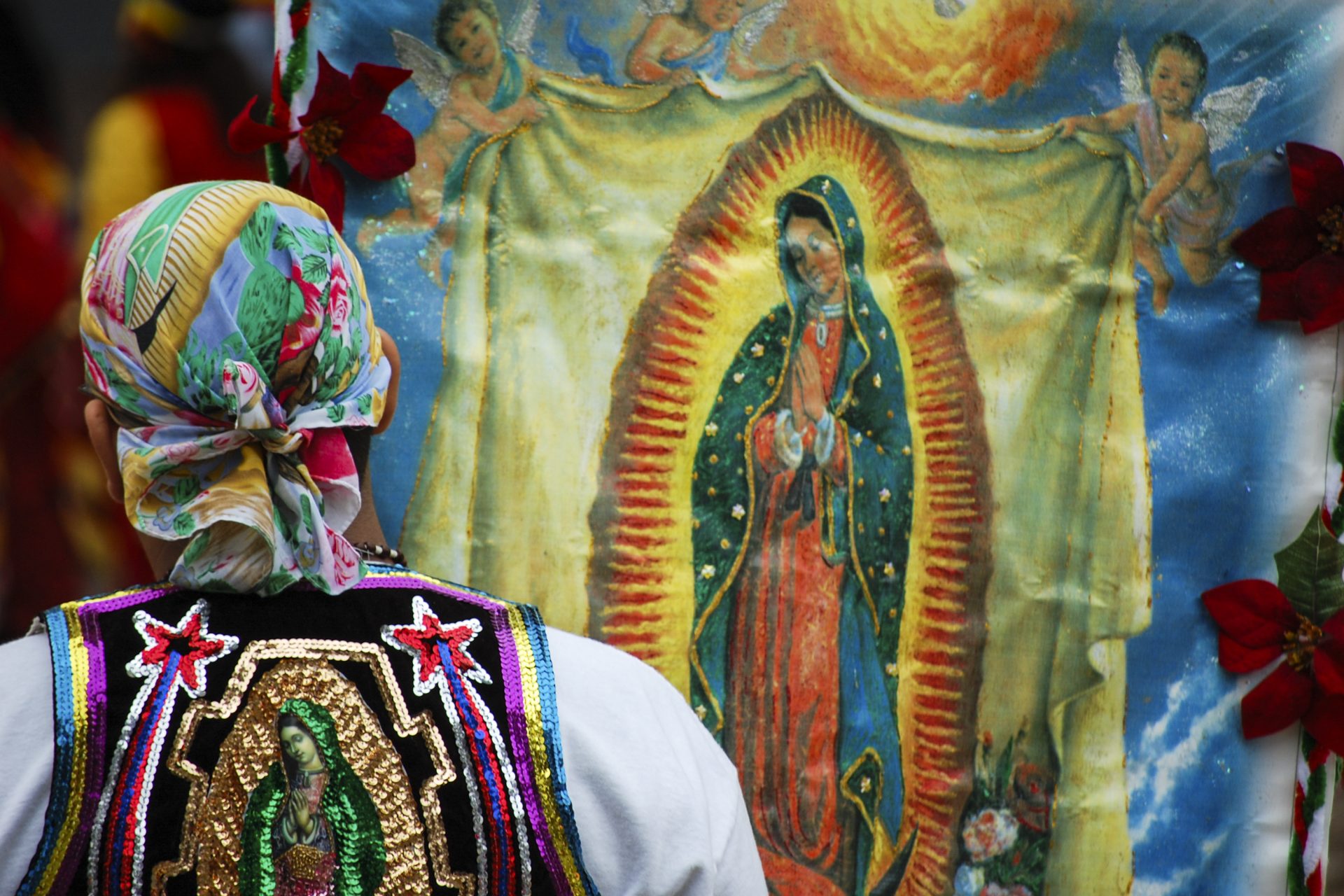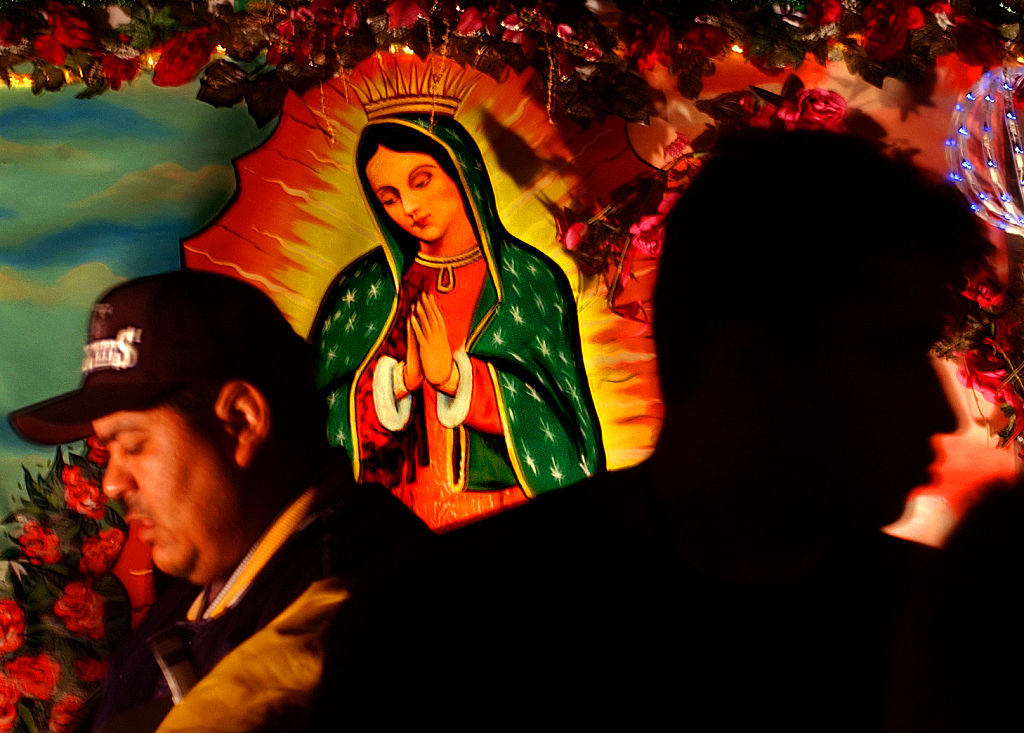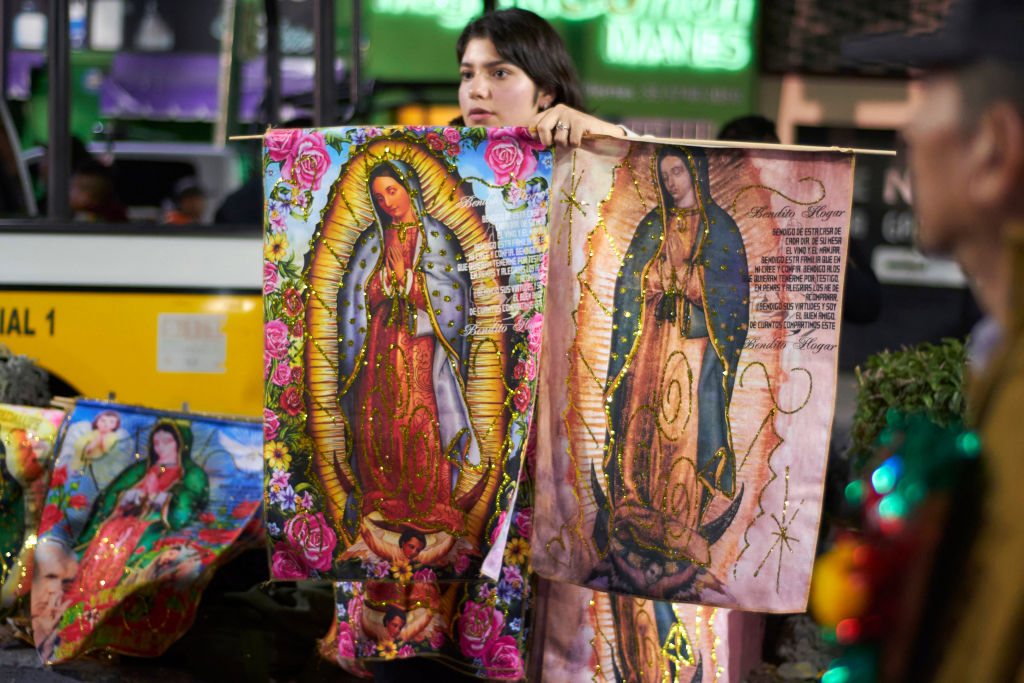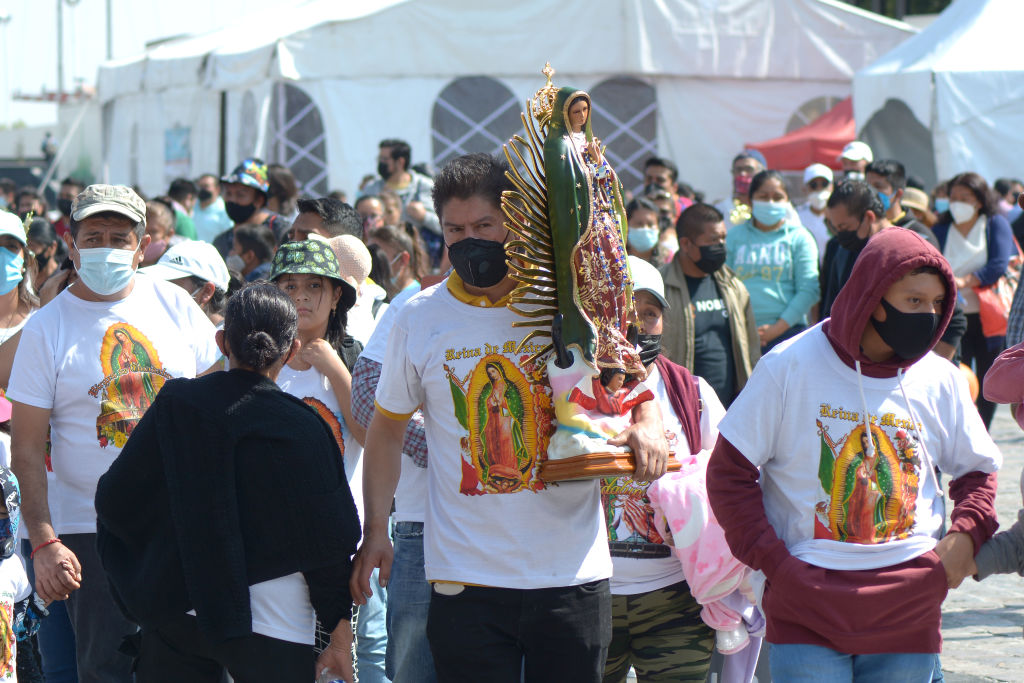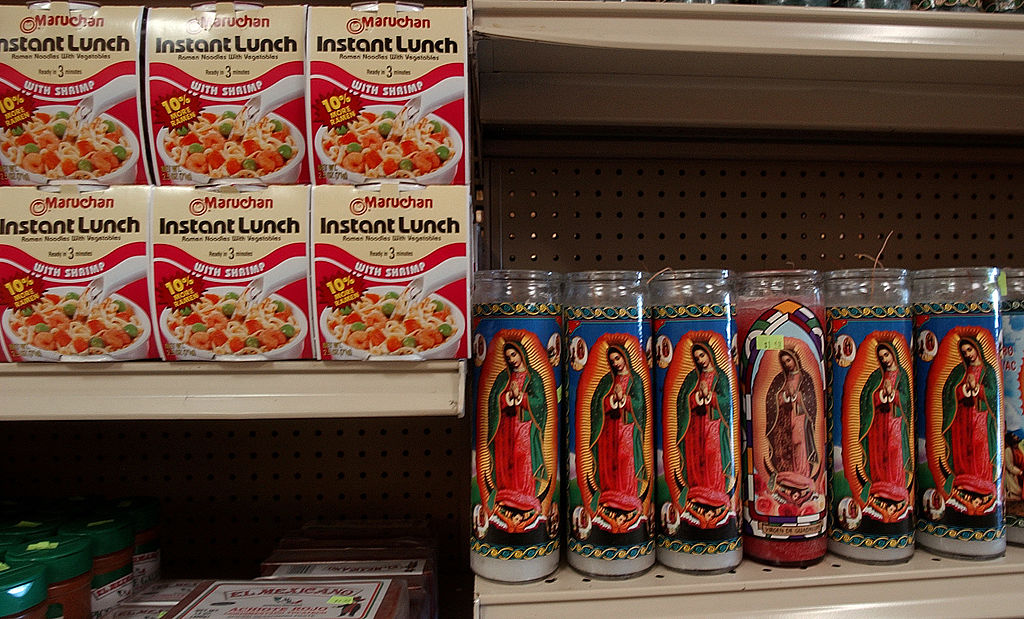Our Lady of Guadalupe: from religious symbol to pop culture icon
The devotion to Our Lady of Guadalupe sprang from an extraordinary event dating back to 1531. It's said she appeared to an indigenous man named Juan Diego on the Tepeyac hill, miraculously imprinting her image on his cloak, according to the legendary tale.
This image, depicting a woman similar to the Spanish representation of Mary, but of mixed race, became more than a religious symbol for Mexican and Latin American Catholics. It turned into a nationalist emblem of mestizaje (mixed heritage), social struggle, and a pop culture icon.
In 1999, Pope John Paul II named her "the Patroness of America" during his visit to Mexico. Every year, pilgrims from various countries travel to the basilica to venerate the little version of Mary or celebrate her in their own nations.
Like clockwork, every December 12, over a million people make their pilgrimage to the Basilica of Our Lady of Guadalupe in Mexico City. Their mission? To serenade 'the little dark-skinned lady of Tepeyac' with 'las mañanitas'.
In the United States, Our Lady of Guadalupe stands as a symbol of the Chicano movement, embraced by Mexican migrants who face discrimination due to their ethnic origin.
(Featured in the photo, Chicano activists in Colorado in 1972)
he image of the Guadalupana is wielded in various social causes. The Zapatista Army, for instance, has donned her with a ski mask to symbolize her protection over indigenous militias.
The feminist movement in Mexico, protesting against femicides and impunity in the face of gender-based violence, also adopted her as a symbol in their fight against social injustice.
Beyond being a symbol of mixed heritage and social struggle, Our Lady of Guadalupe shines as a star in pop culture. Her image is replicated endlessly, revered by believers and atheists alike.
The 'little mother' of all Mexicans is a staple in almost every home, but she's also a familiar sight in mechanic shops, grocery stores, and increasingly, in bars and taco restaurants.
Lately, 'the Dark-skinned Lady's' image has been replicated by designers and worn by celebrities.
Puerto Rican singer Bad Bunny dons a Guadalupana jacket in his music video for ‘Cuidao por Ahí’, and rappers Lil Nas X and Shelley FKA DRAM, among others, have also featured her image in their apparel.
Photo: YouTube @jbalvin ‘Cuidao por Ahí’
Though a sacred icon, Our Lady of Guadalupe is an image undergoing constant aesthetic and symbolic transformation.
Historian Serge Guzinski once said that baroque, an art form adept at creating doubles and cultural replicants, would help Mexico confront the loss of historical consciousness that came with postmodernity. And he was right.
Our Lady of Guadalupe, a symbol born in the era of European conquest, is more alive than ever in the 21st century.
In the words of writer and poet Octavio Paz, "The Mexican people, after more than two centuries of experiments, have faith only in Our Lady of Guadalupe and the National Lottery."

